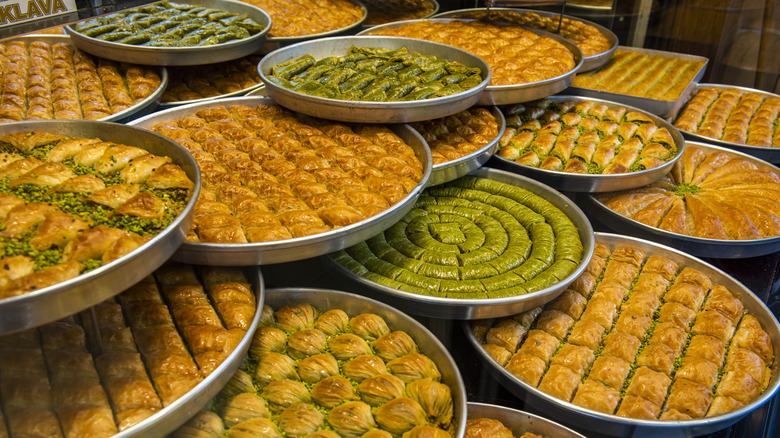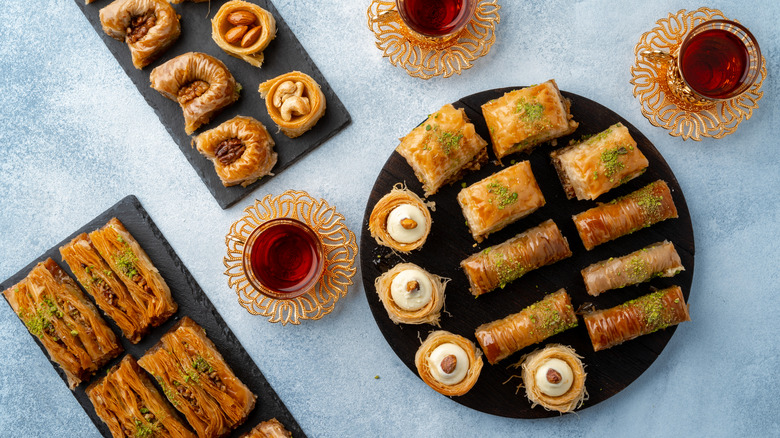The Biggest Misconception People In The US Have About Baklava
Look, not everyone was lucky enough to grow up with Middle Eastern and Balkan pastries at home. Sweets like kadaif, loukoumades, maamoul, awama, and Turkish tulumba are all incredibly rich, sweet, aromatic sugary desserts that make holidays and family gatherings all the more delectable, but none so much as the baklava.
Baklava also known as baqlawa or baklawa is one of the sweetest, nuttiest, and butteriest desserts you'll ever get the chance to sink your teeth into, and for good reason, when made well, this pastry is so flakey, syrupy, and crumbly it will be impossible for you to have just one bite. At its most basic level, Britannica describes the sweet as a phyllo (or filo) layered pastry with ground nuts smoothed in between sheets of dough. Before the 40 or so layers of phyllo are blanketed atop one another, melted butter is brushed down, and will ensure a perfectly flakey, golden bake. After being removed from the oven, the pan of baklava has honey syrup poured over the top and is left to soak into the pastry for a few days before serving. The thing is, like with most cultural recipes, baklava has many variations, different ingredients, and flavor profiles depending on where it is made.
All baklava is not the same
If you didn't have the opportunity to grow up surrounded by substantial amounts of baklava, or in the parts of the world where it is commonly made, odds are that you've only stumbled upon one or two kinds of baklava to indulge in and probably think that there is only one variation of this dish. Now, obviously, not everyone in the United States has this misconception, but it is a common one! In reality, there is a vast amount of baklava varieties.
According to Go Turkiye, baklava can vary from family recipe to family recipe pretty dramatically. It is a dish that each individual makes to their distinct tastes and preferences. The only truly common element between baklava is the use of butter-layered phyllo, nuts, and dousing syrup. Otherwise, people can make baklava however they like. Yummy Istanbul tells us that some people prefer pistachios for their baklava filling because they bring a vibrant color and unique flavor to the dish while others prefer walnuts or both, and some cultures add cream. Baklava also doesn't appear in the same shape either! Some pieces are cut into triangles or squares, while others like the bülbül yuvası roll their pastry into a cylinder. Flavors can also vary, some baklava makers lean on citrus such as lemons and oranges in their simple syrup, not only to keep it from crystallizing but also to add bright flavor to this incredible sweet.

